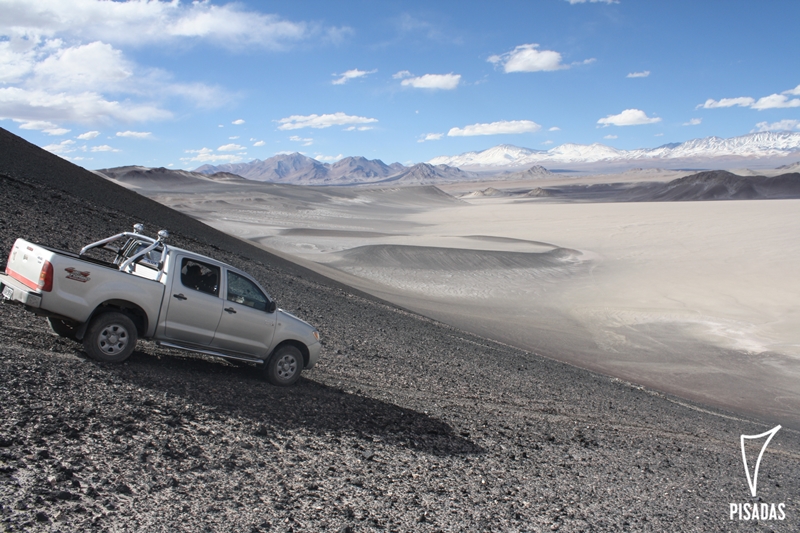
We live in a fast paced world where stillness and introspection might be hard to find.
Fortunately this new year brings us an opportunity to unplug and reset in one of the most spectacular, as enigmatic, landscape of the planet…
The Puna Catamarqueña
Embedded in the mountain ranges of the Andes lies lonely in one of the rooftops of America, a desert-like barren plateau at an average of 3,000 to 4,200 mts above sea level.
The Puna forms a geographical unit with the plateaus of the Cuyo region (Mendoza, San Juan, La Rioja & Catamarca), north-western Argentina, parts of the Chilean Atacama Desert and Bolivia.
On the Map:
Between salt flats and volcanic giants we can find picturesque oases with colorful markets, Andean music and folklore.
The few inhabitants, mostly descendants of earlier Diaguita and Atacama cultures, still keep the old traditions and remnants of the Inca rule as well as the Spanish conquistadors in abandoned ruins, fortresses, colonial churches and small chapels.
DESTINATION HIGHLIGHTS
> ANTOFAGASTA DE LA SIERRA – Doorway to the Puna
In the heart of the Puna of Catamarca, a small village of adobe houses at 3440 mts high portrays the doorway to a fascinating world of volcanoes, salt flats, craters, lagoons and fields of pumice embellished by the presence of Llamas and Vicuñas.


> VOLCAN GALAN – Biggest crater in Argentina
It’s considered as one of the biggest volcanic calderas of the world with an impressive 34 x 24 kms of diameter. Until 1970 it was thought as a mountain (the Cerro Galán with 5.912 m) and only with the first satellite images it was discovered that this mountain was actually a giant volcano that erupted and collapsed.


> LAGUNA GRANDE – Home for Flamingos
Located at 4.150 m near the Galán Volcano where hundreds of Andean Pink flamingos and various types of ducks have their nesting sites in summer.


Culpeo Fox searching for its next meal

> PIEDRA POMEZ FIELD – Witness of cataclysm
The Puna Catamarqueña is a great open-air museum for geologists, volcanologists and other interested visitors. One of the biggest attractions is certainly the large pumice stone field of about 30 km2 near the small town of El Peñon which holds labyrinths of astonishing random shapes.
Pumice is created when a volcano or side crater collapses, releasing a glow avalanche with red-hot stone and gases and rushing down the volcanic slope as a pyroclastic flow at speeds of up to 1000 km / h. Depending on the violence of the eruption, these glowing clouds can spread a hundred or more kilometers, destroying everything on their way.


>SALAR DEL HOMBRE MUERTO – House of the Inca
At 4000 m high this Salt-flat is rich in lithium and other minerals dissolved in salt water.
The Incahuasi ruins are the remnants of a mine where the Incas, and later the Jesuits and Spanish conquistadors, extracted gold.

>SALAR DE ANTOFALLA – Where infinite meets the sky
The long salt desert of the Antofalla salt lake is embedded in this unique landscape at 3,900 m. On average, only 12 km wide but more than 150 km long, it runs through the entire province of Catamarca from north to south and it´s considered one of the longest salt lakes in the world.
Nearby, the Antofalla Village, is an ideal oasis to meet the local settlers, share traditional meals and discover the lagoons at the foot of the Antofalla volcano (one of the highest active volcanoes in the world with 6437mts) .
These mysterious water levels form a unit of small lagoons, each one with a different color; they go from blue to green to orange according to their minerals.
This is one of the loneliest regions in Argentina – an overwhelming natural landscape where infinity meets the sky.


USEFUL INFORMATION
Climate:
The climate of the Puna is dry and cold with very large temperature fluctuations between day and night. Depending on the altitude, temperatures below 0º may be expected at night in summer. In the east and north there is a short rainy season in summer (December to February), but it becomes sparse towards the southwest. The rainfall falls as violent thunderstorms but continuous rain is very rare.
When to go:
Although there are activities available all year round, the best season for the region is from September to April.
***Photographic material provided by:
Kurt Fischbacher, María Victoria de Mattey, Maximiliano Martinez & Santiago Geli.
Are you planning a trip to Puna? Learn more about our available programs by clicking here, or Contact us today to begin designing your trip with our dedicated travel specialists.
For more travel articles visit our Blog
Related Post:
We are a team of travel experts that offers unique trips throughout Argentina for solo travelers, couples, families and small groups.
Knowing our country well and have travelled it extensively we reveal the unspoiled natural spots, the diverse local cultures and all the impressive landscapes that are present in our carefully designed itineraries. If it’s an Active, Drive&Sleep or Sightseeing tours, we have options for every taste.
